- Local Time: 01:31 AM
- Weather: 14 ℃ / 58 ℉
The Middle Kingdom of Egypt (2040–1780 BCE) was a golden age marked by reunification, cultural renewal, and strong centralized rule. Emerging after the First Intermediate Period, it began with Mentuhotep II and peaked under rulers like Senusret III and Amenemhat III, who expanded borders and built impressive monuments. Art and literature flourished, focusing more on daily life and human experiences, while Osiris worship grew, making the afterlife more accessible to all. Economic prosperity was driven by agriculture and trade. The era ended with political decline and the rise of the Hyksos, paving the way for the New Kingdom.

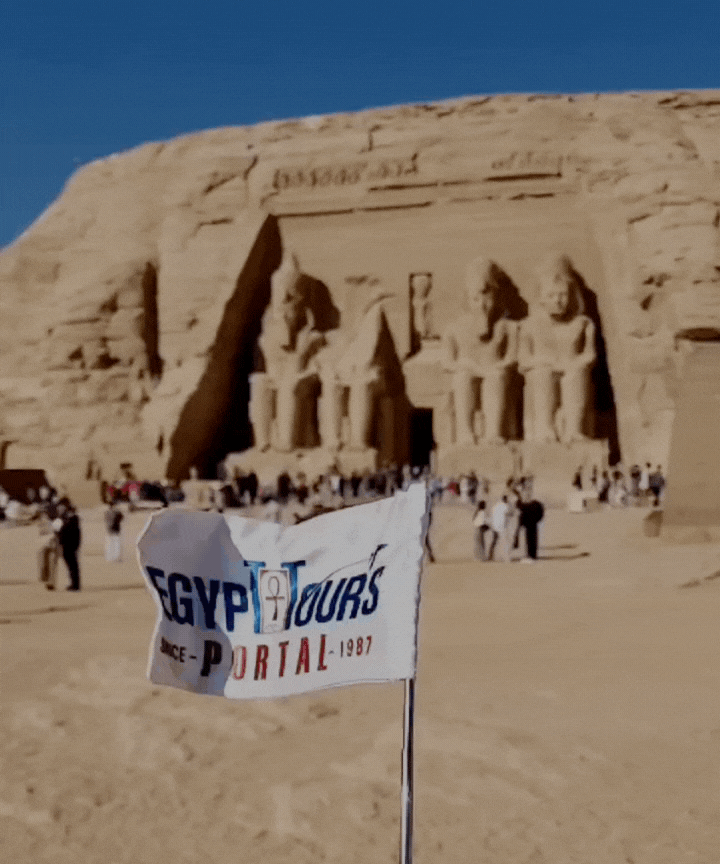
The Middle Kingdom of ancient Egypt is hailed as the "Golden Age of Reunification" that stands as a beacon of cultural, political, and artistic revival that spanned from 2040 to 1780 BCE, this era emerged from the shadows of chaos and civil unrest that marked the end of the Old Kingdom, guiding Egypt into a period of renewed prosperity and innovation.
Within its vast deserts and along the mighty Nile, ancient Egyptian pharaohs like Mentuhotep II and Senusret III restored order, solidified their rule, and fostered an unprecedented flourishing of ancient Egyptian art, literature, and architecture. The Middle Kingdom, beyond the ancient Egyptian temples and ancient Egyptian tombs, holds an aura of mystery. It is a time when divine kingship was reimagined, when the gods’ voices seemed to echo more profoundly through the land, and when the lives of ordinary Egyptians began to be chronicled with new depth.
Like a river winding through the heart of Egypt, the Middle Kingdom invites us to explore a realm where ancient traditions were redefined, and where the pulse of the gods could still be felt in the stones, sands, and sacred texts of an empire reborn. Step back into a world where time seems to stand still, and discover the wonders of this enthralling chapter in Egyptian history.
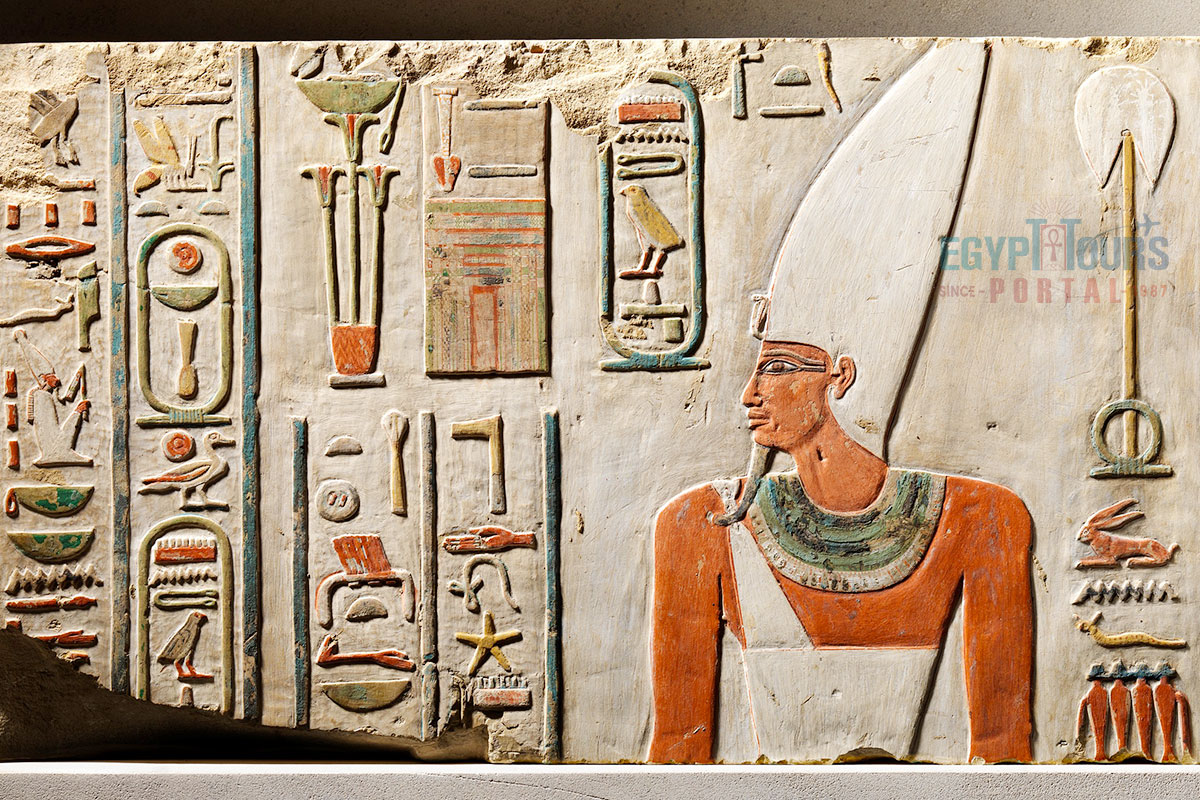
When the old kingdom of Egypt fell, the Middle Kingdom rose from its ashes to regain the glory of ancient Egypt once again. The middle kingdom Egypt is known to be an age of transformation that took place between 2040-1782 B.C.E from the eleventh century to the thirteenth century, it is famous for the greatest works of literature and art that, unlike anything that ever came before it and influenced this enlightenment to new Heights which became the face of the Egyptian culture in front of the world.
During Egypt’s Middle Kingdom, artistic expression began to shift, expanding beyond its traditional purpose of glorifying kings and gods. While religious texts, pyramid inscriptions, and theological writings continued to play a role, this era witnessed the emergence of true literature—works that delved into the complexities of the human experience and the lives of ordinary people.
For the first time, Egyptian writers explored themes such as mortality, personal doubt, and existential questions. The poignant Lay of the Harper and the philosophical Dispute Between a Man and His Ba both questioned the certainty of life after death. Meanwhile, narrative prose flourished with celebrated works like The Tale of the Shipwrecked Sailor and The Tale of Sinuhe, both offering rich, introspective journeys far beyond royal court life.
Visual arts evolved alongside literature. Sculpture and painting began to reflect scenes from daily life—fishing in streams, farming in fields, or families strolling through villages. These images, often found in tombs, served to remind the soul of its earthly life and guide it toward the afterlife paradise known as the Field of Reeds, a reflection of the world left behind. Artistic realism also advanced, as sculptors developed sharper and more lifelike techniques to capture individual expression.
Architecture saw remarkable progress as well. Inspired by the mortuary complex of Mentuhotep II at Thebes, temple construction during the 12th Dynasty emphasized harmony with the natural landscape. Many temples of this period replicated the aesthetic and structural design of Mentuhotep’s monument, symbolizing a reverence for both divine order and environmental balance.
The rulers of the 12th Dynasty actively encouraged this flourishing of creativity. Their collaborative and respectful relationship with regional governors (nomarchs) fostered a stable and prosperous period, making the 12th Dynasty one of the most artistically and culturally vibrant chapters in ancient Egyptian history.
Discover the extraordinary art of the ancient Egyptian civilization
Read More
The middle kingdom of Egypt, a.k.a the golden age, was also the witness to many improvements and achievements in science and architecture during the 12th dynasty because of Mentuhotep II, who unified Egypt once again, just like Menes, and ushered in the middle kingdom.
Mentuhotep II was able to end the war between the tribes of Thebes and Heracleopolis when the Theban dynasty won and consolidated its rule of the kingdom. He and his ancestors chose "Thebes" to become the capital and artistic center during the 11th dynasty, and he also launched military campaigns to Nubia and restored Egyptian control once again in Sinai.
Many sculptures were made in gold and silver, and many works of literature preserved all the scientific and mathematical discoveries of that time, and many religious beliefs, such as the concept of Ma'at and Osiris became the most prominent ancient Egyptian gods during this period.

The twelfth dynasty began with the first Pharaoh of this dynasty, Amenemhat I, who moved the capital of Egypt to a new town called Itjawy, possibly near the necropolis at Lisht. He was killed by his royal guard, and his junior co-regent, his son Senuseret (1971 – 1926 B.C.E.), took over the rule at once. This proved the efficiency of the co-regent system to maintain stability and prevent the dismantling of the government, and for these reasons, this system lasted throughout the Twelfth Dynasty.
Senuseret was able to maintain prosperity and safety for 45 years and was able to retrieve all the territories lost in the first intermediate period. His son Amenemhat II (1929 B.C.E. – 1895 B.C.E) was able to make trade connections with Nubia and restore the nomarchs' government once again.
His successor, Senusret II (1897 B.C.E. – 1878 B.C.E), created trade connections with plasticine and even then followed by Senusret III (1878 B.C.E. – 1839 B.C.E), who was a fierce warrior-king who led his army across Nubia, where he built many forts across the country and built many temples in Egypt, but have been devoured by time.
Finally, comes Amenemhat III (1860 B.C.E. – 1815 B.C.E), the last pharaoh of the Middle Kingdom of Egypt, who increased the mining operations in the Sinai desert and exploited the Fayyum area to balance the difference between the population and the food production, and after his death, the Middle Kingdom of Egypt came to an end.
The end of Egypt's Middle Kingdom marked a significant turning point characterized by political fragmentation and cultural decline during the Thirteenth and Fourteenth Dynasties. Weakened central authority led to frequent leadership changes and a decentralized government, which left Egypt vulnerable to internal strife and external threats, including the Hyksos which have a group of Near Eastern settlers.
The Hyksos, skilled in warfare and armed with advanced technologies, gradually gained power, eventually ruling Lower Egypt from their capital at Avaris during the Second Intermediate Period (1650–1550 BCE). Though they adopted aspects of Egyptian culture, their rule was viewed by native Egyptians as a dark era of foreign domination. This period of decline ultimately set the stage for the Theban rulers to expel the Hyksos, leading to the rise of the New Kingdom, an era of Egyptian resurgence, imperial expansion, and renewed cultural achievements.
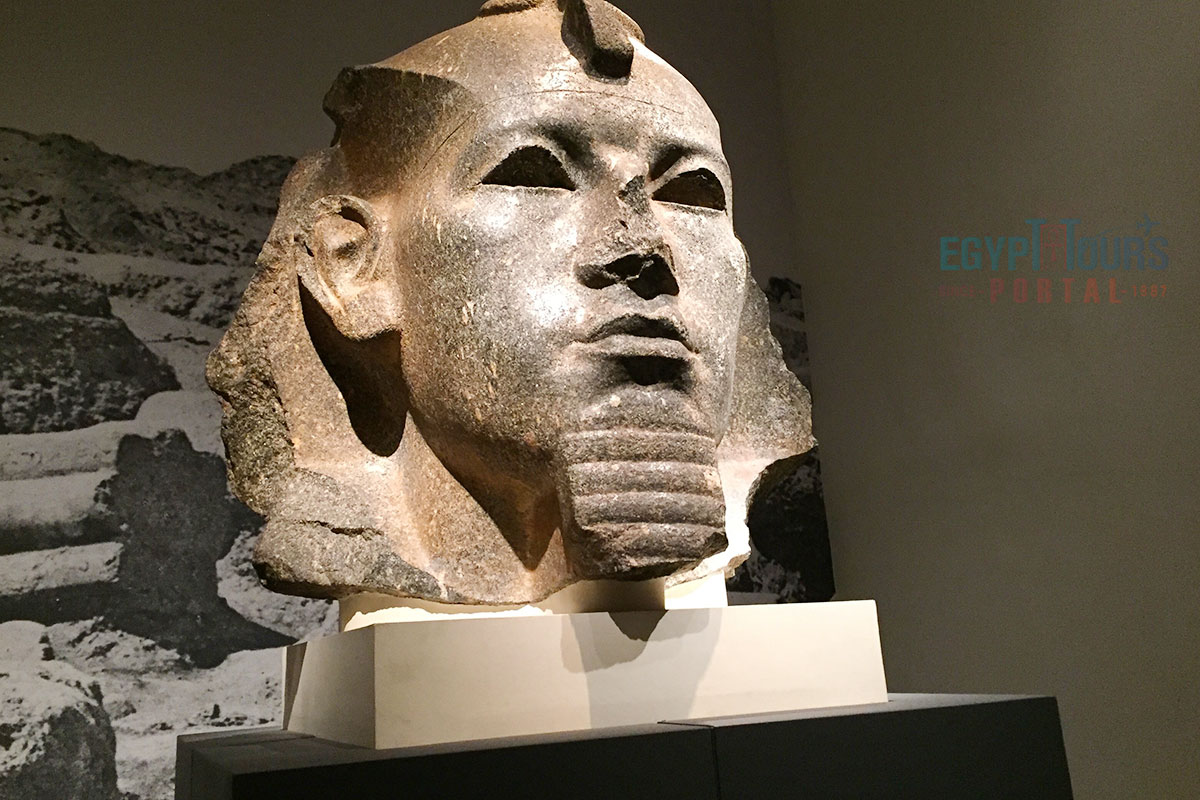
The Middle Kingdom was marked by a return to centralized power and a more structured government. The pharaohs took a keen interest in domestic improvements, such as agricultural reforms, particularly the irrigation of the Faiyum region, and extensive construction projects, including temples, fortresses, and pyramids.
This period saw a transition toward more realistic and individualized art, as well as the flourishing of literature that explored both human emotions and philosophical themes. Religious practices also shifted, with the cult of Osiris becoming more prominent. Military expansion was mostly defensive, focused on securing Egypt’s borders and controlling key trade routes.

The Middle Kingdom of Egypt spanned from 2040 BCE to 1780 BCE, and was an era marked by political stability, cultural renaissance, and architectural advancements. The ancient Egyptian pharaohs of this period are celebrated for their contributions to reuniting Egypt, fostering prosperity, and fortifying the nation’s borders.


Unlike the massive stone ancient Egyptian pyramids of the Old Kingdom, Middle Kingdom pyramids were often constructed with mudbrick cores and encased in limestone. The pyramids of pharaohs like Amenemhat I and Senusret I at Lisht are notable examples of this evolution in construction methods. These pyramids were generally smaller and more modest than their predecessors but were accompanied by intricate mortuary complexes.
The pyramid of Senusret II at Lahun and the Hawara pyramid of Amenemhat III, often referred to as "The Labyrinth" by Herodotus, are among the most well-known. These structures reflected advancements in internal design, with complex passageways and hidden chambers to deter tomb robbers.

Ancient Egyptian Artifacts from the Middle Kingdom demonstrate remarkable craftsmanship and an emphasis on both realism and luxury. Jewelry from this period, such as the treasures found in the tomb of Princess Sithathoryunet, showcases intricate gold work and the use of precious stones like carnelian, turquoise, and lapis lazuli. Statuary from the Middle Kingdom stands out for its realism and individuality, particularly the sculptures of Senusret III, which depict the pharaoh with a stern, almost careworn expression, reflecting the responsibilities of kingship.
Weapons, tools, and everyday items like pottery illustrate advancements in metallurgy, with the increased use of bronze allowing for improved tools and weaponry. Literary texts, including copies of The Tale of Sinuhe and The Instructions of Amenemhat, were often placed in tombs, highlighting the importance of literature and wisdom in Middle Kingdom society.

The ancient Egyptian architecture of the Middle Kingdom was characterized by functional fortifications, grand mortuary complexes, and temples that blended harmoniously with the natural landscape. The mortuary temple of Mentuhotep II at Deir el-Bahari is a prime example of innovative design, integrating terraces and colonnades into the cliffside. Middle Kingdom forts along the Nubian border, such as Buhen, Semna, and Mirgissa, showcased the period's focus on defense and control of strategic areas.
Advances in construction techniques also led to larger and more complex buildings, although stone was often reserved for religious and royal structures, while mudbrick was commonly used for other buildings. Notable buildings from the Middle Kingdom include the White Chapel of Senusret I at Karnak, which is known for its beautifully preserved relief carvings.
Fortresses along the Nubian frontier, such as Buhen, were built to defend Egypt’s southern border and monitor trade routes. The pyramid complexes of Lisht and Lahun reflected advances in architecture, with internal passageways and burial chambers becoming more intricate.
Explore the marvelous architecture of the Middle Kingdom of ancient Egyptian civilization
Read More
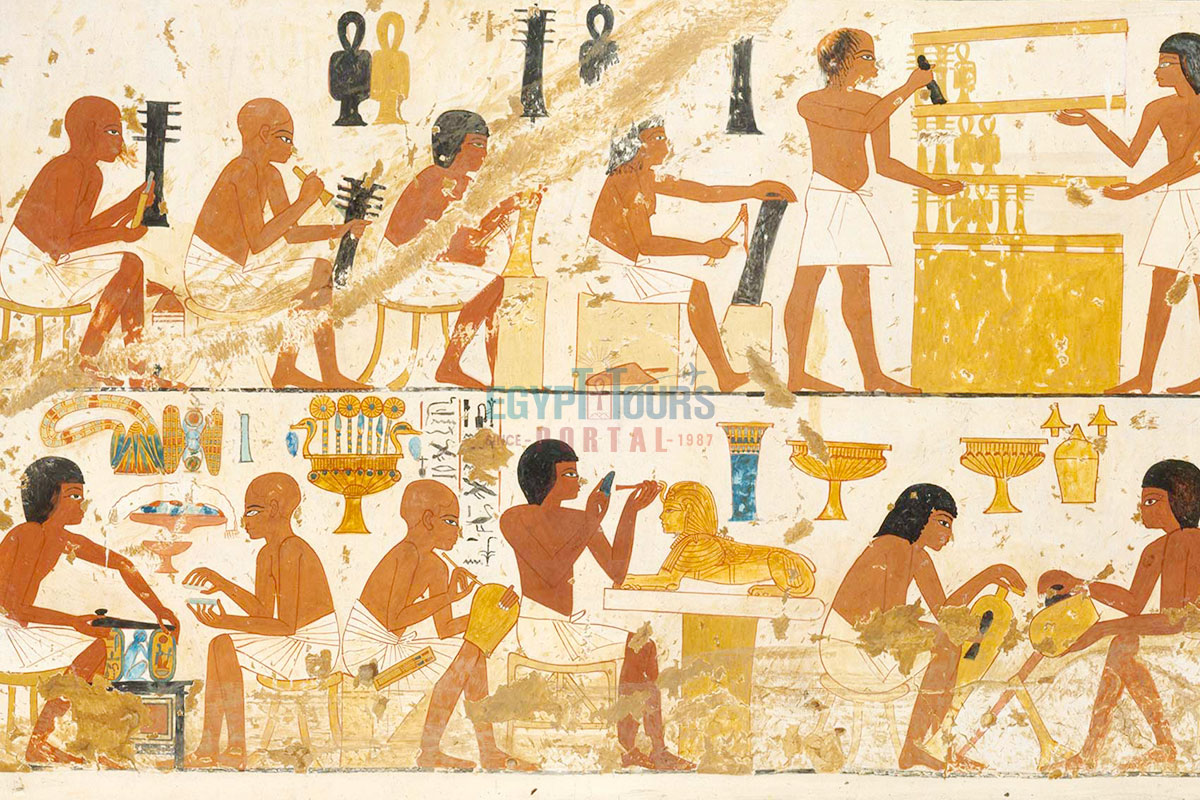
Ancient Egyptian Craftsmen during the Middle Kingdom were highly skilled in working with a variety of materials, including stone, metal, and wood. They created realistic statues, fine jewelry, and detailed reliefs that reflected both religious themes and everyday life. The introduction of bronze tools allowed for greater precision in stonework and the production of superior weapons and tools.
Craftsmen were often employed in large-scale state projects, such as the construction of fortresses and temples, as well as in the production of luxury goods for the elite. Their work demonstrated a balance between functional utility and artistic expression.

The Middle Kingdom featured a structured but relatively fluid social hierarchy, and also during the entire time of ancient Egypt. At the top was the pharaoh, who was regarded as a divine ruler and the ultimate authority. Below the pharaoh were high officials such as the vizier, who served as the chief administrator, the nobles, and the nomarchs, who governed Egypt's provinces.
The bureaucracy expanded during this period, providing increased opportunities for social mobility, particularly among scribes and administrators. Artisans, craftsmen, and laborers made up the middle tiers, while farmers formed the majority of the population. A standing army emerged during the Middle Kingdom, creating a distinct class of professional soldiers who served both in peacetime and during military campaigns.
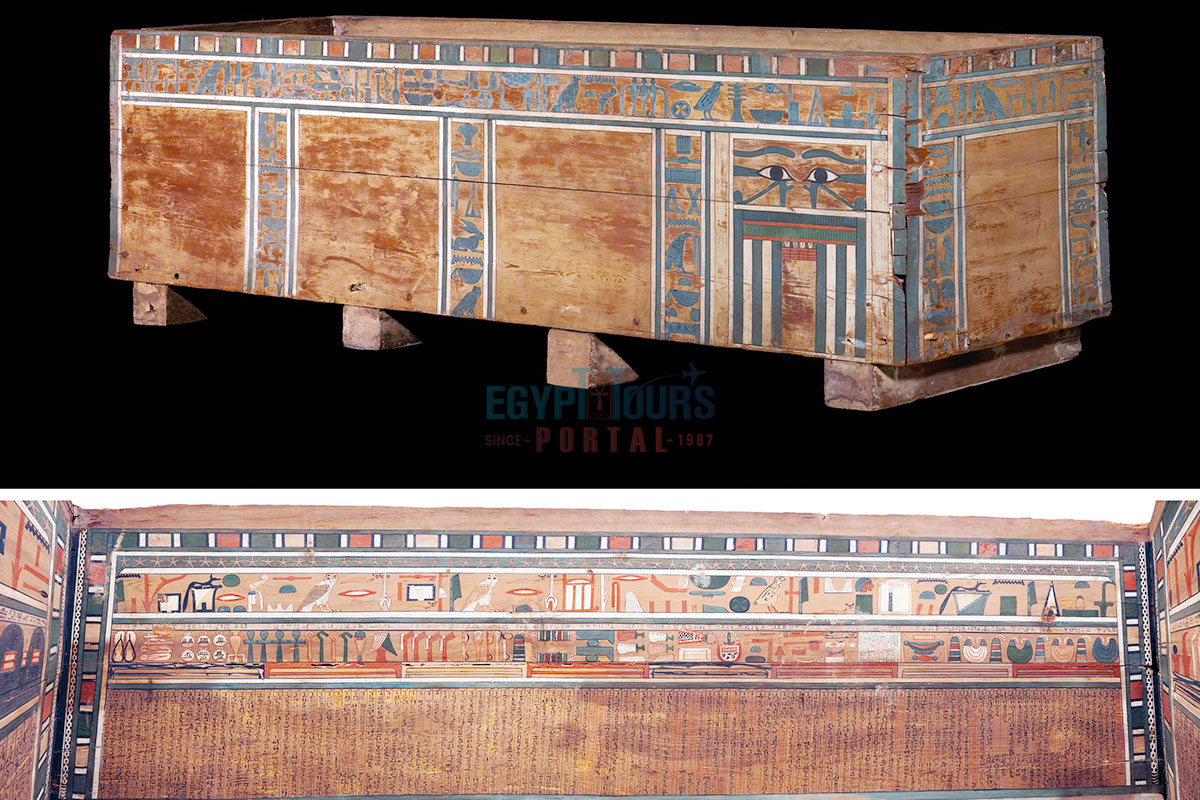
Burials during the Middle Kingdom reflected a shift toward more individualized practices and beliefs about the afterlife. Coffins became increasingly elaborate, often decorated with protective spells from the Coffin texts, which served as a precursor to the Book of the Dead. Tombs of wealthy individuals were filled with wooden models depicting scenes of ancient Egyptian daily life, intended to provide for the deceased in the afterlife.
The use of stone sarcophagi became more common among the elite, while the middle class utilized wooden or mudbrick tombs. The introduction of the rishi coffin, shaped like a human figure with feathered wings, symbolized the protective embrace of the gods and highlighted the evolving beliefs about the journey to the afterlife.

The Middle Kingdom of Egypt (2050–1650 BCE) saw a resurgence in urban planning, marked by the growth of key cities that reflected the administrative, cultural, and economic ambitions of the time. Thebes rose as a major political and religious hub, becoming the capital under Mentuhotep II and a center for the worship of Amun. Amenemhat I founded Itj-Tawy as the new royal capital to centralize power. Nearby Lisht became an important royal burial site, while El-Lahun, a planned workers' town, showcased early urban planning linked to pyramid construction.
Abydos thrived as a religious center dedicated to Osiris, Elephantine acted as a trade and defense hub, and the Faiyum region saw significant agricultural development, enhancing economic prosperity. These cities underscore the Middle Kingdom's focus on central power, economic growth, and religious devotion.

The ancient Egyptian economy of the Middle Kingdom was primarily agrarian, with the annual flooding of the Nile providing fertile soil for agriculture. The Faiyum irrigation projects undertaken by Amenemhat III significantly increased agricultural productivity, allowing for surplus production and economic stability. Ancient Egyptian trade flourished, with expeditions to Punt for incense and myrrh, to Byblos for timber, and to Nubia for gold and other valuable resources. The state exerted control over major industries, such as mining and quarrying, which were essential for the construction of temples, monuments, and royal projects.

Ancient Egyptian fashion in the Middle Kingdom remained simple yet elegant for most people. Linen garments were the staple of everyday clothing, with men typically wearing kilts and women donning long, form-fitting dresses. Wealthier Egyptians displayed their status through elaborate jewelry, crafted from gold, silver, and semi-precious stones. Beaded collars, bracelets, anklets, and amulets were popular accessories. Among the ancient Egyptian nobles, fashion also held religious significance, with certain garments or accessories symbolizing divine favor or protection, and the use of specific colors denoting different aspects of their status and beliefs.

The ancient Egyptian politics of the Middle Kingdom were marked by a strong centralized bureaucracy, with the pharaoh at the apex of power. The pharaohs of the 12th Dynasty instituted reforms to curtail the power of local governors (nomarchs), ensuring greater control over Egypt’s regions.
The co-regency system, where a ruling pharaoh appointed a successor to govern alongside him, was implemented to ensure a smooth transition of power and prevent the kind of fragmentation that had plagued earlier periods. The pharaohs also relied on a network of viziers and officials to administer justice, collect taxes, and oversee agricultural production, creating an efficient and stable government.

Ancient Egyptian religion during the Middle Kingdom saw significant changes, particularly with the rise of the Osiris cult, which emphasized the afterlife and the moral conduct necessary to achieve eternal life. The idea of the afterlife became more accessible to all Egyptians, not just the pharaoh and the elite, a concept known as the "democratization" of the afterlife.
Temples dedicated to Amun and Osiris became prominent centers of worship, and ancient Egyptian festivals celebrating Osiris, such as the Festival of Khoiak, which reenacted the death and resurrection of Osiris, gained popularity. The Coffin Texts, which were inscribed on coffins and tomb walls, guided the deceased to navigate the afterlife, reflecting the evolving religious beliefs of the time.
The Middle Kingdom period left an indelible mark on Egypt’s history, shaping the country’s religious beliefs, administrative practices, and artistic traditions for centuries to come. Our Egypt vacations and Nile River cruises will be the key to discovering and exploring the incredible and enchanting heritage of the Middle Kingdom of Egypt that spanned thousands of years.
Private 4 Days Cairo Tour Packages for New Zealander Travelers 4 days Cairo Egypt To...
Tour Location: Cairo – Giza...
5 Days Cairo and Alexandria Tour Package For New Zealander Travelers 5 days Cairo an...
Tour Location: Cairo/Giza/Alexandria...
6 Days Cairo, Luxor & Aswan Tour Package For New Zealander Travelers 6 days Cair...
Tour Location: Cairo/Giza/Aswan/Luxor...
Amazing 7 Days Cairo and Hurghada Holiday for New Zealander Travelers 7 Days Cairo &...
Tour Location: Cairo – Giza – Hurgh...
The Middle Kingdom lasted from approximately 2040 BCE to 1782 BCE.
The Middle Kingdom was known for its reunification of Egypt, cultural renaissance, military expansion into Nubia, and advancements in literature, art, and architecture.
It was considered a golden age due to its political stability, economic prosperity, military successes, and the flourishing of arts and literature.
There were no foreign rulers during the Middle Kingdom, but the period ended with the rise of the Hyksos during the Second Intermediate Period.
Pharaohs from the 11th and 12th Dynasties, such as Mentuhotep II, Senusret III, and Amenemhat III, ruled during this period.
Before the Middle Kingdom, Egypt was fragmented under local rulers during the First Intermediate Period.
The capital was Itjtawy, located near Lisht.
The Middle Kingdom itself was not invaded, but by the end of the period, the Hyksos had started gaining influence in Lower Egypt.
The Middle Kingdom lasted for about 258 years.
Mentuhotep II reunified Egypt, while Amenemhat I consolidated his rule during the Middle Kingdom.
Pharaohs improved agricultural productivity through irrigation projects, strengthened Egypt’s borders through military campaigns and fortifications, and reformed the government to create a more centralized and efficient bureaucracy.
The entire country of Egypt deserve to be explored with its every heavenly detail but there are places that must be seen before any other such as the breathtaking Hurghada's red sea, The wonders of Cairo the pyramids of Giza, the great sphinx, the Egyptian Museum, Khan El Khalili Bazaar, the wonders of Luxor like Valley of the Kings, Karnak & Hatshepsut temple and the wonders of Aswan such as Abu Simbel temples, Philea temple, Unfinished obelisk and The Wonders of Alexandria like Qaitbat Citadel, Pompey's Pillar and Alexandria Library. Read more about the best places to visit in Egypt.
If you want to apply for a Visa On Arrival that lasts for 30 days then you should be one of the eligible countries, have a valid passport with at least 6 months remaining and pay 25$ USD in cash, as for the E-Visa for 30 day you should have a valid passport for at least 8 months, complete the online application, pay the e-visa fee then print the e-visa to later be presented to the airport border guard. You could also be one of the lucky ones who can obtain a free visa for 90 days. Read more about Egypt travel visa.
Egypt has a variety of delicious cuisines but we recommend “Ful & Ta’meya (Fava Beans and Falafel)”, Mulukhiya, “Koshary”, a traditional Egyptian pasta dish, and Kebab & Kofta, the Egyptian traditional meat dish.
The best time to travel to Egypt is during the winter from September to April as the climate becomes a little tropical accompanied by a magical atmosphere of warm weather with a winter breeze. You will be notified in the week of your trip if the Climate is unsafe and if any changes have been made.
You should pack everything you could ever need in a small bag so you could move easily between your destinations.
We have been creating the finest vacations for more than 20 years around the most majestic destinations in Egypt. Our staff consists of the best operators, guides and drivers who dedicate all of their time & effort to make you have the perfect vacation. All of our tours are customized by Travel, Financial & Time consultants to fit your every possible need during your vacation. It doesn't go without saying that your safety and comfort are our main priority and all of our resources will be directed to provide the finest atmosphere until you return home.
You will feel safe in Egypt as the current atmosphere of the country is quite peaceful after the government took powerful measures like restructuring the entire tourist police to include all the important and tourist attractions in Egypt. Read more about is it safe to travel to Egypt.
Wear whatever feels right and comfortable. It is advised to wear something light and comfortable footwear like a closed-toe shoe to sustain the terrain of Egypt. Put on sun block during your time in Egypt in the summer to protect yourself from the sun.
The best activity is by far boarding a Nile Cruise between Luxor and Aswan or Vise Versa. Witness the beauty of Egypt from a hot balloon or a plane and try all the delicious Egyptian cuisines and drinks plus shopping in old Cairo. Explore the allure and wonders of the red sea in the magical city resorts of Egypt like Hurghada and many more by diving and snorkeling in the marine life or Hurghada. Behold the mesmerizing western desert by a safari trip under the heavenly Egyptian skies.
There are a lot of public holidays in Egypt too many to count either religious or nation, the most important festivals are the holy month of Ramadan which ends with Eid Al Fitr, Christmas and new years eve. Read more about festivals & publich holidays in Egypt.
Egypt is considered to be one of the most liberal Islamic countries but it has become a little bit conservative in the last couple of decades so it is advised to avoid showing your chest, shoulders or legs below the knees.
Arabic is the official language and Most Egyptians, who live in the cities, speak or understand English or at least some English words or phrases. Fewer Egyptians can speak French, Italian, Spanish, and German. Professional tour guides, who work in the tourism sector, are equipped to handle visitors who cannot speak Arabic and they will speak enough English and other languages to fulfill the needs of all our clients.
The fastest way is a car, of course, a taxi. If you are in Cairo ride a white taxi to move faster or you could board the fastest way of transportation in Egypt metro if the roads are in rush hour.
The temperature in Egypt ranges from 37c to 14 c. Summer in Egypt is somehow hot but sometimes it becomes cold at night and winter is cool and mild. The average of low temperatures vary from 9.5 °C in the wintertime to 23 °C in the summertime and the average high temperatures vary from 17 °C in the wintertime to 32 °C in the summertime. The temperature is moderate all along the coasts.
It is the home of everything a traveler might be looking for from amazing historical sites dating to more than 4000 years to enchanting city resorts & beaches. You will live the vacation you deserve as Egypt has everything you could possibly imagine.









